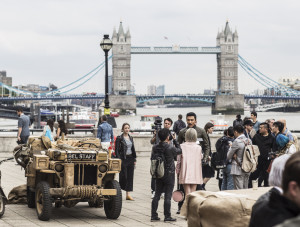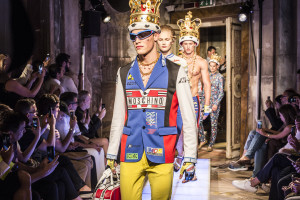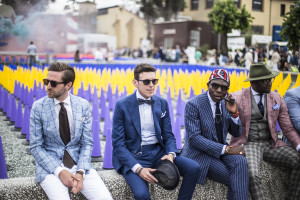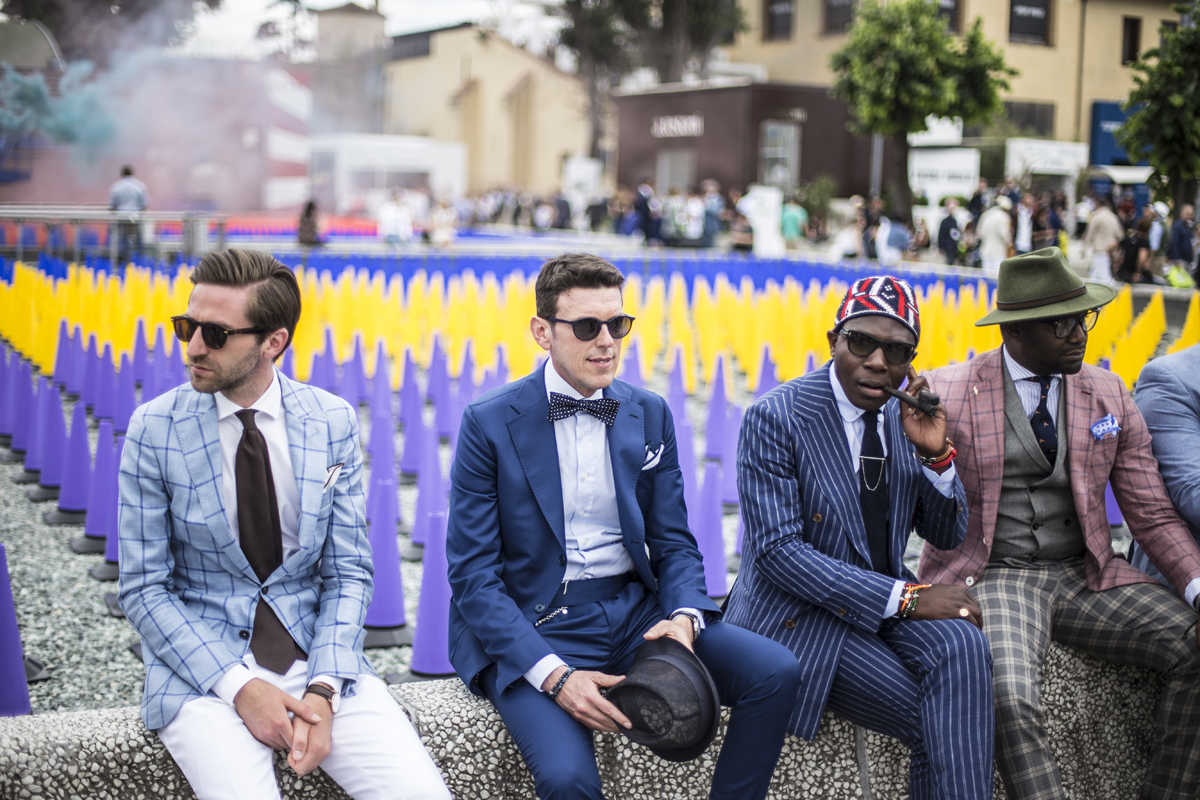SHOWS: MENSWEAR’S GRAND EUROPEAN TOUR

With both London Collections: Men and Pitti Uomo reporting steady increases across the board, and Milan and Paris as influential as ever, the European market has never been so essential.

Following the latest edition of London Collections: Men, chairman and editor-in-chief of British GQ Dylan Jones said, “Since we created London Collections: Men in June 2012 the attendance from American press and buyers has risen by 81 percent. From Europe excluding the U.K., it’s increased by 91 percent and from China it has grown by a whopping 185 percent.” It is a fairly clear-cut success then, and retailers tend to agree. “London is so nascent: it’s only been around since 2012, but it’s become quite vital,” says Bergdorf Goodman fashion director Bruce Pask. “With such great strides in such a short amount of time, I hope New York Fashion Week: Men’s can follow the success of that model.” Paul Birardi, co-founder of Odin, agrees, “We tend to find experimental and playful designs for men in London. There are also well established British designers who consistently show beautiful collections. It seems to be a growing market with more offerings season to season.”
From the newest addition to the fashion calendar to a slightly more established one: Pitti Uomo, who before LC:M set up shop, were the first port of call on the men’s fashion calendar, and are still enjoying growth. Explains CEO Rafaello Napoleone, “The absolute leadership of Italy in the production of textiles, clothing and accessories for men, not to mention the unique location of Pitti Uomo, represent the link between the quality and the quantity of international buyers that is not reflected in any other fashion event. Our ability to offer an updated version of classic men’s elegance, a stylistic and sociological center of gravity, based on the quality of workmanship and fabrics and a representation of the male values that are slowly changing is what concentrates the attention of the press and buyers.” Pitti is something of an anomaly. While technically a trade show, the fair has transcended what would be typically conceived as such. “Pitti is most important for me because you see so much: on the streets, in the booths and at the events,” says Mario Bisio of Mario’s.” I never miss Pitti in January. It is too vital.” VP and fashion director of Saks Eric Jennings agrees, “Pitti has always been an integral part of our seasonal trip to Europe for the men’s shows. As Pitti comes early in the buying season it gives us a good read on the major commercial trends of the season: the important colors, patterns, fabrications, silhouettes: it’s the best place to see the evolution and innovation in tailored clothing.” With fashion shows including Moschino and Ports 1961, Pitti really does offer a full 360° of the menswear market experience, and with Milan a short train ride away, what could be considered part two of the Italian market really compounds Italy as an
essential destination. “Milan takes its fashion very seriously,” says co-founder of Carson Street Clothiers, Brian Trunzo. “What Las Vegas is to entertainment, Milan is to fashion. Simply put, it’s over-the-top and where all the glamour takes place. Italian houses differ from Parisian houses in that they are unabashedly in-your-face about their point of view. It’s a critical place for us to transact with designer brands like Marni, Missoni and Neil Barrett.”


While many stores write orders in Milan, the fourth and final stop on the European circuit is for some the most important. “When you want to be really considered on an international level, you have to be with the best competition,” explains executive president of the French Couture Federation, Stephane Wargnier. “If you play tennis you want to be at Roland Garros or at Wimbledon, you want to be in the most important competition because if you win, then you’re the best in the world. Paris is the place where the biggest competition in fashion is showing.” While representatives from each of the four stops will heartily lay claim to be the most important center of fashion in the world, you could certainly find retailers to support each one. “Paris has become the most important city for Carson Street,” says Trunzo. “It is the epitome of elegance and sophistication in the men’s market. The brands that show in Paris, as a whole, are most aligned to the direction we’ve been moving in over the last few seasons.” Odin’s Birardi agrees, “Paris is the central location for fashion. The clear diversity of designers and contemporary brands makes Paris the most important market. If there is one city to go for market in Europe it would be Paris.”
While there is so much variety across each individual of the four markets, and all are essentially influential in their own way, there is rarely one overarching movement in the European market. The continuing casualization of menswear, whether it be through the deconstruction of traditional tailoring or the ubiquitous influence of streetwear, was evident throughout. Hyper-decorative elements were also striking, from embroidery and beading to the lace in Burberry or ruffles in Moschino. Perhaps then, the overarching movement could be expression: the global attention on menswear fueling experimentation and creativity. While I was in London, I was unlucky enough to miss the Dunhill show, because an anti-austerity protest drove traffic to a standstill. Perhaps that anti-austerity movement, in London and across Europe, has suffused the European collections.
A FASHIONABLE FRACAS
On June 12th of this year, the Business of Fashion published an article: “What is the Purpose of LC:M?” In it, the author largely discredits the entire event as “illogical,” suggesting the “hype and hysteria” of LC:M and other similar menswear “jamborees” are “no more exciting than warmed up fish and chips.” The article positions fashion weeks as largely pointless, offering nothing for “young men whose style is driven more by music and subcultures like skateboarding.” The young men in question are some 500 shoppers in line for a new T-shirt release at cult skate shop Supreme, whose collective style is admired by the author as having “verve, confidence, and wit.” The author is right about one thing: Supreme have certainly cornered their niche. The author continues, “When I go into my local newsagent, I see at least a dozen men’s magazines with such minute circulations— ’niche’ they are called, though many might also call them vanity publishing—that I wonder what on earth their purpose might be.” Apparently some niches are more worthy than others.
Words like “unconstructive” or “malapropos” spring to mind, and accordingly, the article was dismissed in short shrift by Caroline Rush, CEO of the British Fashion Council, who posted in the comment section that she considered the article, “An insult to the brilliant menswear designers and businesses we have in London.” She continued, “In just seven seasons, LC:M has become a globally relevant platform for menswear businesses to promote themselves and grow… The season on season growth is indicative of the global appeal and relevance… International media and retailers come from 39 countries to experience our city, take part in LC:M and see the businesses here… The British menswear sector is going from strength to strength and the designers and audiences that take part make the event as stimulating as it is rewarding…there is an opportunity for everything from suiting to sportswear to prosper.” Oh, snap.


